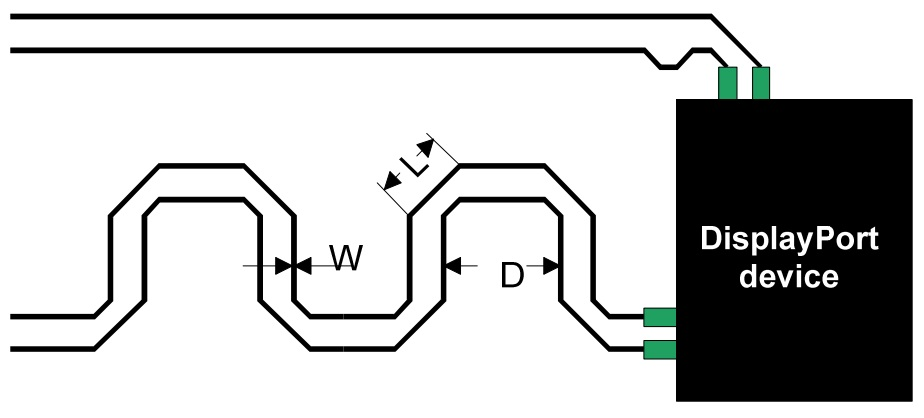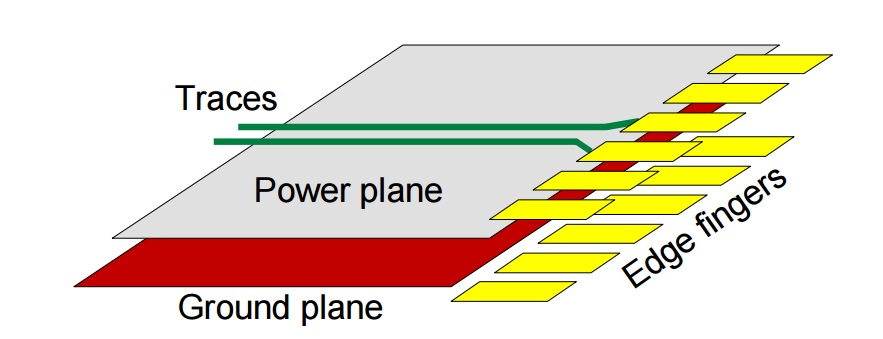SLAS907C December 2015 – December 2020 HD3SS214
PRODUCTION DATA
- 1 Features
- 2 Applications
- 3 Description
- 4 Revision History
- 5 Pin Configuration and Functions
- 6 Specifications
- 7 Detailed Description
- 8 Application and Implementation
- 9 Power Supply Recommendations
- 10Layout
- 11Device and Documentation Support
- 12Mechanical, Packaging, and Orderable Information
Package Options
Mechanical Data (Package|Pins)
- ZXH|50
Thermal pad, mechanical data (Package|Pins)
Orderable Information
10.2 Layout Example
 Figure 10-2 Skew Seduction via Meandering Using Chamfered Corners
Figure 10-2 Skew Seduction via Meandering Using Chamfered Corners Figure 10-3 Routing Around an Object
Figure 10-3 Routing Around an Object Figure 10-4 Lumping Discontinuities
Figure 10-4 Lumping Discontinuities Figure 10-5 Avoiding via Clearance Sections
Figure 10-5 Avoiding via Clearance Sections Figure 10-6 Keeping Planes out of the Area Between Edge-fingers
Figure 10-6 Keeping Planes out of the Area Between Edge-fingers